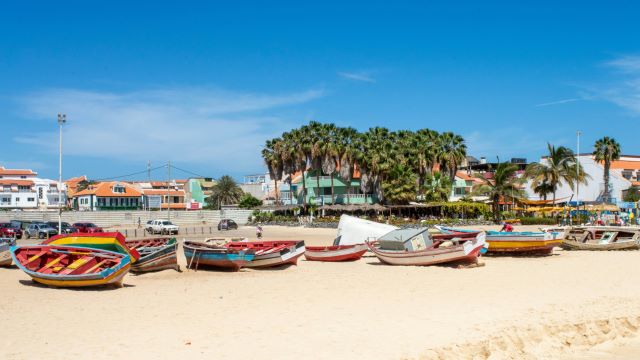Off the coast of West Africa, scattered like fragments of emerald across the Atlantic, lies the island nation of Cabo Verde. Here, the rhythm of the sea threads through daily life, entwined with the pulse of Creole culture and the hum of island winds.
Days unfold at a pace that feels unshaken by the demands of the outside world. Warm afternoons linger into evenings alive with the strains of guitar and the sway of dancers on cobblestone streets. This is a place where time bends gently, and urgency seldom finds a foothold.
“No Stress” as Guiding Principle
Among the most familiar phrases on the islands is “No stress,” a mantra repeated not for effect, but as an earnest reflection of local philosophy. It is an ethic that prizes balance over busyness, the present moment over relentless striving.
Conversations stretch unhurried in shaded courtyards. In the evenings, the sound of morna—the nation’s melancholic, lilting music—drifts into the salt-tinged air. Faces brighten easily, greetings are extended warmly, and life moves with a steady, unforced rhythm.
Communities Woven by Connection
Across the archipelago, from the terraced highlands of Santo Antão to the colorful, colonial-era streets of Mindelo, the sense of community is palpable. In villages, doors remain open, and neighbors step through without ceremony.
Family meals are long, often punctuated by bursts of laughter, the clink of glasses, and the background music of a crackling radio. In sandy alleyways, children chase footballs until dusk, while elders gather to exchange thoughts on politics, weather patterns, or fishing conditions.
Work Carried with Quiet Pride
Beneath the relaxed exterior lies a culture of diligence. Farmers cultivate steep volcanic slopes with precision, drawing life from difficult soil. Artisans string beads into intricate jewelry, their stalls bright against the shoreline. Fishermen mend nets on weathered docks, their work seasoned by the tides.
Yet when labor ends, leisure is embraced without guilt—a game of cards under fading light, a glass of grogue, or a slow walk along the shore as the Atlantic deepens into night.
A Constellation of Islands, Each with Its Own Light
Cabo Verde’s ten islands are bound by language, music, and shared history, yet each offers a distinct personality. Santiago hums with political and cultural life. São Vicente pulses with art, theater, and an enduring nightlife. Santo Antão rises in dramatic green valleys, its hiking paths tracing ancient trade routes.
Sal and Boa Vista, with their turquoise shallows and wind-swept dunes, draw international visitors seeking long horizons and clear waters. Despite their differences, the islands hold tightly to a common Creole identity, sustained by a collective memory and the enduring pull of song.
The Music That Shapes the Soul
Music is both a mirror and a vessel for Cabo Verde’s spirit. The slow, wistful notes of morna carry the ache of longing and the softness of remembrance. Coladeira and funaná bring faster rhythms—joyous, percussive, and social. Contemporary Cape Verdean pop bridges tradition with global sounds, yet the nation’s musical soul remains rooted in its past.
Cesária Évora, the “Barefoot Diva,” still echoes through the islands—a voice that distilled the national mood into something at once intimate and universal. Her songs linger as testament to the enduring belief that life’s deepest truths are best sung.
An Enduring Lesson
In a century marked by haste, Cabo Verde stands as a reminder that value lies not in the volume of tasks completed but in the quality of moments lived. Here, life’s tempo is set by wind, tide, and the rhythms shared between people.
It is an archipelago that offers no promise to quicken the heart—only to steady it.
Sources:
- Lobban, Richard A. Cape Verde: Crioulo Colony to Independent Nation. Westview Press, 1995.
- Fernandes, Gabriel. “Music and Identity in Cape Verde.” African Arts, vol. 33, no. 4, Winter 2000.
- Seibert, Gerhard. Creole Societies in the Portuguese Colonial Empire. Cambridge University Press, 2012.

